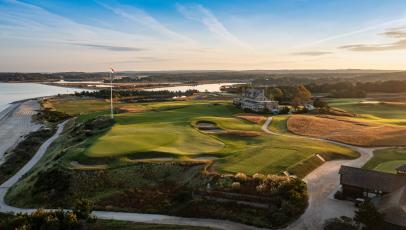Best in State
The best golf courses in Georgia
An interesting battle is being waged for the No. 2 position in the Georgia state ranking (we don't anticipate Augusta National being moved off the top spot anytime soon). Two years ago, Ohoopee Match Club, a 2018 Gil Hanse/Jim Wagner design in the scrubby south-central part of the state, didn't have enough ballots to qualify for the America's 100 Greatest Courses ranking (it now does, and is listed at No. 34). It did, however, have enough to qualify for Best in State, and its scores placed it second, ahead of perennial runner up Peachtree Golf Club, the great Robert Trent Jones/Bobby Jones collaboration in Atlanta. This year, Peachtree turned the table and scored higher, so it's back in the second spot, though their scores are just .74 apart—which is a miniscule difference across our six scoring categories.
Change could be coming elsewhere, too. As is true across the country, Georgia is a hotspot for renovation. Seven of the top 20 courses have already begun or will begin renovations in 2023, including top-10 fixtures East Lake, Ocean Forest and Atlanta Country Club. That doesn't count the annual modifications to Augusta National, including the lengthening of the 13th hole for the 2023 Masters and the alterations to 11 and 15 for the 2022 tournament. Of course, those changes, some significant, don't seem to impact the Augusta National's scores, which doesn't seem possible. Perhaps getting the once-in-a-lifetime invitation to play the course temporarily suspends one's ability to critique change.
Below you'll find our 2023-'24 ranking of the Best Golf Courses in Georgia. If you're interested in the best public options, check out our collection of the best courses you can play in Georgia.
We urge you to click through to each individual course page for bonus photography, drone footage and reviews from our course panelists. Plus, you can now leave your own ratings on the courses you’ve played … to make your case why your favorite should be ranked higher.



From Golf Digest Architecture Editor emeritus Ron Whitten:
I’ve been told Gil Hanse had first examined the site of Ohoopee Match Club as far back as 2006 considered it ideal for golf: gently rolling terrain with no severe elevation changes, and beautiful sandy soil deposited by the nearby Ohoopee River, perfect for drainage and firm, fast conditions.
The ground around tiny Cobbtown, Ga., is also perfect for growing onions—it’s just northeast of Vidalia, world-famous for the Vidalia onion. Indeed, Ohoopee’s logo is a freshly picked onion, although if you look closely, its roots are three writhing snakes.
Any symbolism pertaining to match play is uncertain; perhaps it simply suggests the sort of putts one will face. What’s the composition of a course meant for match play? One might think it would contain lots of penal hazards, because a triple bogey on any particular hole would not be fatal in match play.
Perhaps the targets would be smaller than normal, to level the playing field between big hitters and short-but-accurate golfers. That’s not the composition of the 7,325-yard championship course at Ohoopee. Hanse did produce dramatic visuals in this sandy locale that hark back to portions of Pinehurst and Pine Valley, from long expanses of sandy rough dotted with native plants to deep, foreboding pits of sand, but they’re mostly on the far perimeter of holes.
Explore our complete review here—including bonus photography and ratings from our expert panelists.






.jpg.rend.hgtvcom.861.574.suffix/1651087461858.jpeg)







.jpg.rend.hgtvcom.861.646.suffix/1644376859342.jpeg)





23. (20) The McLemore Club: Highlands
Rising Fawn, GA, United States




.jpg.rend.hgtvcom.861.646.suffix/1644377409207.jpeg)



• • •
Explore Golf Digest's recently relaunched Places to Play community, where you can add star ratings and reviews for all the courses you play. We've collected tens of thousands of reviews from our course-ranking panelists to deliver a premium experience, which includes experts' opinions, bonus course photography and videos, plus much more. Check it out here!





